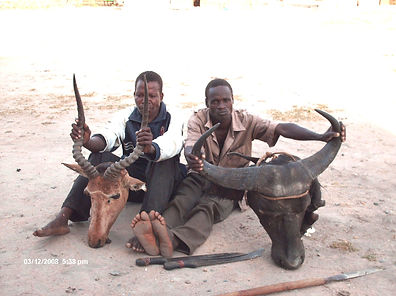I'm a paragraph. Click here to add your own text and edit me. I’m a great place for you to tell a story and let your users know a little more about you.
The Great Serengeti
South of the equator the region receives plenty of rainfall, about 40 inches anually. Here, forests and huge flat savannas are plentiful and support a wide range of animal life, such as antelope, lions, elephants, zebras, and hippopotami, for which Kenya are famous. The largest of these savannas is the Serengeti Plain which is located in Tanzania near the Kenyan border. Many countries in Africa, especially Kenya and Tanzania have come to realize the importance of its wildlife and have created national parks to protect it. For example, the government of Tanzania created the Serengeti National Park. Government officials banned hunting, which has brought many species such as the African Black Rhino to the brink of extinction. Today, these national parks attract millions of tourists armed with cameras each year who come to go on safari. A safari is an overland journey to view wildlife. Tourism benefits the economy in many ways. Tourists spend money on hotels, restaurants, tour guides, and often visit local markets looking for African crafts. Tourism is one of East Africa's most important industries and accounts for almost 25% of the region's GDP.
Poachers
Each park and preserve has a number of wardens whose jobs it is to manage the land and scare off poachers. Illegal hunting by poachers represents the biggest threat to Africa's wildlife. Armed with high-powered rifles and tracking equipment, these poachers kill tens of thousands of animals illegally throughout Africa each year. Some poachers kill only prized animals such as elephants for their tusks and black rhinos for their horn, which are turned into pieces of art or used as folk medicines. For example, there were 1.3 million African elephants in 1977; by 2000 this number had fallen to 600,000. The trade in ivory is illegal in Africa but poachers continue to do it because they can get big bucks by selling these goods on the black market for hundreds and even thousands of dollars. To combat poaching, wardens often set traps for poachers who, if caught, are arrested and face heavy fines or even prison time.
Poverty- Wildlife's Biggest Threat
The biggest threat to Africa's wildlife is poverty. Most animals that are illegally killed are sold for their meat rather than their horn or tusks. Bush meat, as it is called, often fetches good prices from vendors who sell it in the streets or market stalls. Vendors hawk their wares of prized zebra, baboon, gazelle, or hippo meat. Many do not realize that they are helping to destroy Africa's unique fauna. The sale of bush meat is not illegal in all African countries and where it is, poachers often pay bribes to the police to avoid being arrested.
Kenya- A Beacon of Hope
Kenya is one of the continent's success stories in wildlife conservation. Kenya's success is due in large part to the stability of the government. Kenya has had almost 40 years of peace and stability since it became independent in 1963. Because the country is not plagued by civil war, ethnic killings, disease, or crime, tourists feel safe in coming to Kenya on vacation. Of course tourists bring their Euros, Pounds, Yen, and Dollars, which help to boost the country's GDP. In a country where unemployment approaches 40%, tourism helps to create jobs such in hotels, restaurants, museums, tour guides, etc. Many people have become entrepreneurs by starting small street businesses selling food and local crafts. Even farmers have benefited as tourists come to visit local tea and coffee plantations and buy a few samples to take back with them as souvenirs.






© Copyright 2013 Go Social Studies Go. All rights reserved.
